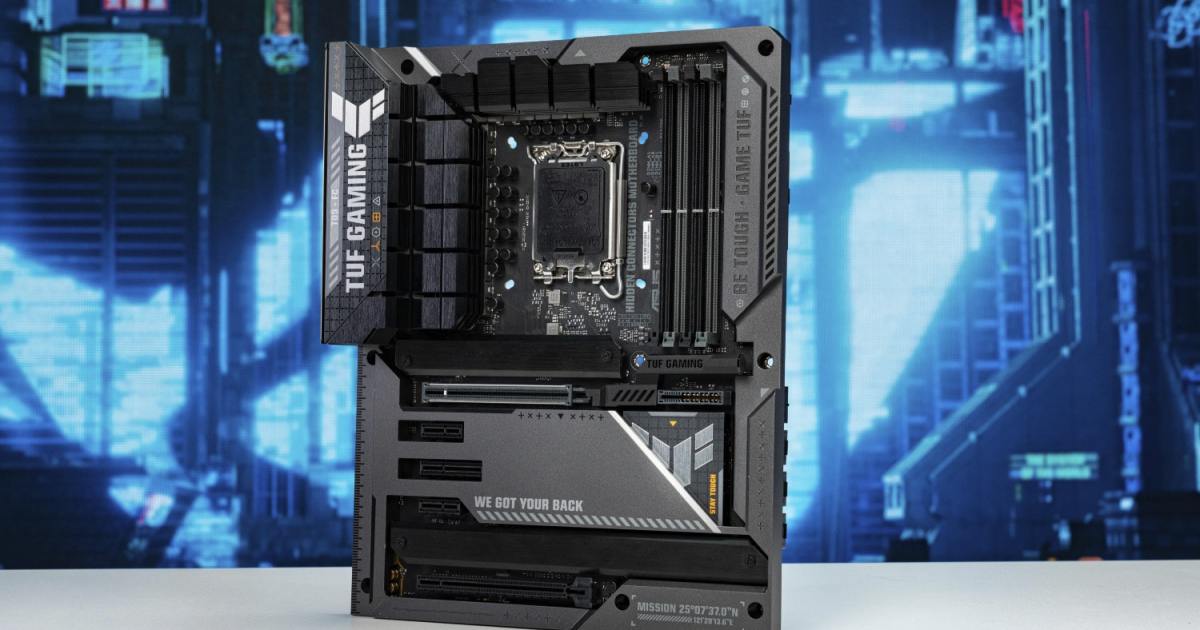The motherboard is the spine of your computer, but despite how important it is, it often becomes an afterthought. It’s easy to overlook when there are shinier, more exciting components to spend money on, such as a top-notch graphics card.
Buying a motherboard can be a tricky process, because, on the surface, they all seem to do the same thing — and if they all do the same thing, why should you spend more money on one? There are actually several good reasons to shell out some cash on a midrange to high-end motherboard, and you should be aware of them before you work on your next PC build.
Slots and ports
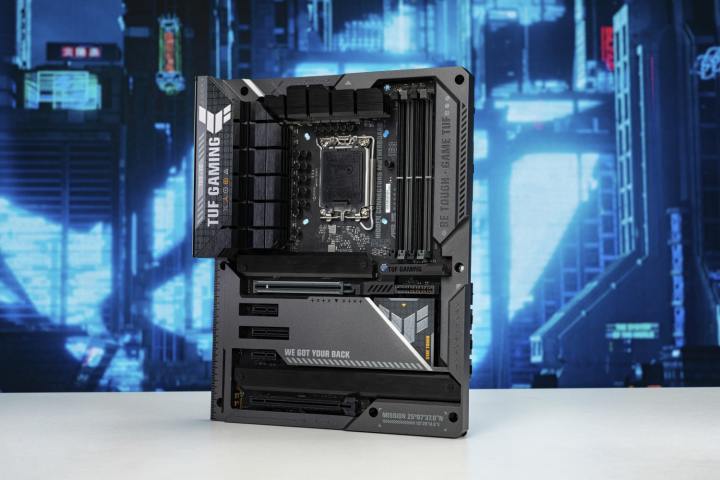
Quick note: For the purpose of this article, I’ll be comparing this
Asus TUF Gaming Z790-Plus motherboard with the
Gigabyte B760M Gaming X AX. Both were made for the LGA1700 socket, meaning motherboards suited for Intel’s latest processors. They set a good baseline for why you might want to spend more on one motherboard versus another.
Perhaps the most obvious things to consider when buying a motherboard are slots and ports. Motherboards aren’t like processors — you usually pick them later, based on the chipset required, and then based on your other needs, such as PC case form factor, GPU slots required, or additional PCIe slots you might need. Most people think they don’t need any extra slots, and they’re often right, but many don’t realize just how big a gap there can be between a cheap motherboard and a more high-end version.
For instance, RAM. A better motherboard will often let you install not two, but four memory modules, which can exponentially increase the total amount of memory you can have. The two boards I mentioned above both have four RAM slots, but the Asus can support up to 192GB of DDR5-7200 memory, and the Gigabyte maxes out at 128GB of DDR4-5333, so it’s not just about the sheer amount of memory as much as speed and type.
PCI Express slots are another thing. Pricier motherboards offer access to PCIe 5.0, which isn’t needed now but will be in the future. You’ll often find that Micro ATX motherboards are cheaper than their full-size ATX counterparts, as well, and Micro ATX boards don’t include as many PCIe slots. You can also use these extra PCIe slots for storage drives, sound cards, network cards, USB expansion cards, capture cards, or RAID controllers (if you have multiple hard drives and want to set them up in RAID configurations).
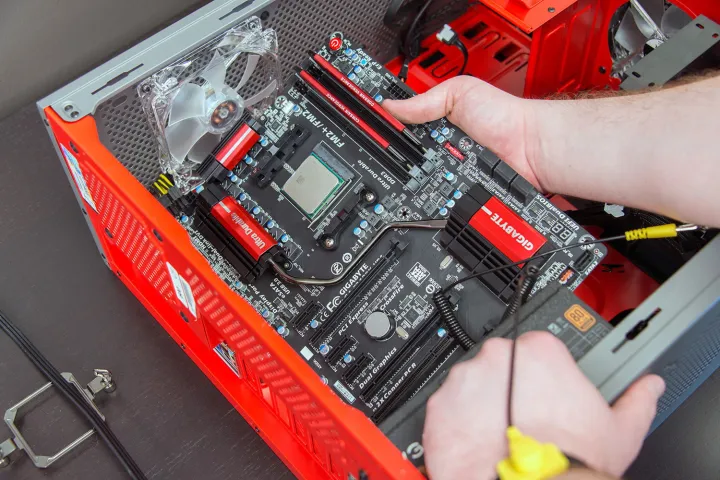
The pricier Asus board comes with a single PCIe 5.0 x16 slot, but also with a PCIe 4.0 x16, PCIe 4.0 x4, and two PCIe 3.0 x1 slots. There are also multiple M2 slots for SSDs. Meanwhile, the Gigabyte sports a single PCIe 4.0 x16 expansion slot, a PCIe 4.0 x4 slot, and two M2 connectors. More extreme motherboards may even feature more than one PCIe x16 lane, so that gap could be bigger.
Even if don’t plan on adding RAID or capture cards, the extra expansion slots can allow you to add internal Wi-Fi and Bluetooth if your motherboard lacks it. A plus of a higher-end motherboard, though, is that they usually support wireless connectivity out of the gate.
Ports are another thing worth keeping in mind, because high-end boards feature more of them, and they’re often more capable. For instance, the Asus board has a ton of USB ports, and they’re all USB 3.2, including Type-A and Type-C ports. Meanwhile, the Gigabyte board still has plenty of ports, but the vast majority of them are USB 2.0. Internal headers matter here, too. Many budget options still skip on an internal USB-C header, for example, which you’ll find commonly on modern midrange motherboards.
Some of the best motherboards (like the Gigabyte Z790 Aorus Xtreme) also come with things like access to 10Gb Ethernet or 40Gbps Thunderbolt ports. In general, the more expensive the motherboard, the better the connectivity.
VRM and overclocking
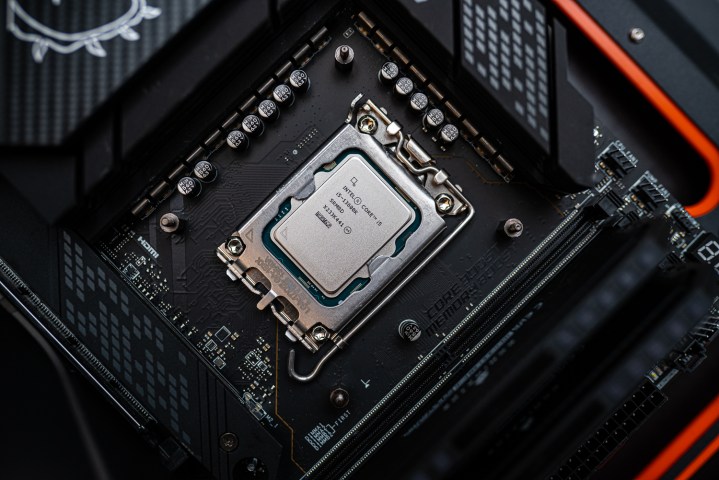
VRM stands for Voltage Regulator Module, and if you’re going to try overclocking, you should be paying attention to it.
The job of the VRM is to provide your CPU with precise voltages — a necessity to keep your chip from burning up even if you’re not overclocking. They’re necessary because the raw voltage that comes out of your PSU is a lot higher than the voltage of the CPU — 12V versus (at most) 1.5V. Most stock CPUs run closer to 1V. A good VRM will protect your computer from instability by delivering the right amount of voltage for every component, but also using that power efficiently without wasting it.
If you’re not overclocking, a high-end VRM may not seem necessary, but it all depends on your CPU. If you’re using a high-end processor, like the Core i9-13900K, on a mid-to-low-end motherboard, you’re essentially wasting the juice that your chip can provide.
On a weaker motherboard with worse VRMs, overclocking your high-end CPU can lead to instability. High-end boards often deck out their VRMs with heatsinks, meaning that they can handle the heat better, and thus, support consistently higher clock speeds. They also typically have more power phases. To that end, the expensive Asus motherboard comes with 16+1 DrMOS power stages and enlarged VRM heatsinks, while the Gigabyte sports 10-phase VRMs (with heatsinks, although no word on how robust the cooling is). For comparison, the even more outrageous Gigabyte Z790 Aorus Xtreme has 23 power phases.
If overclocking is of concern, the chipset mattesr, too. With Intel, in particular, you need a more expensive Z-series chipset to overclock your unlocked processor. B-series chipsets still don’t support overclocking, though thankfully, this isn’t a problem with AMD’s X-series and B-series motherboards, as they both support overclocking.
Extra features

High-end motherboards, like any other component, tend to provide a bunch of extra features that might make your life easier or could help you push your overclocking to new heights. While these things usually cost a pretty penny, they’re nothing to turn your nose up at if your budget can stretch to it.
Let’s start with the UEFI BIOS. High-quality motherboard manufacturers will deck out the UEFI with a lot of useful features, such as advanced tuning that lets you make adjustments to the inner workings of your PC.
Many motherboards will also come with a BIOS flash button and USB port that lets you update the BIOS without even installing a CPU first. This is often crucial, especially if you’re using a slightly older motherboard with a newer processor. Of course, due to the way both AMD and Intel (but especially Intel) deliver upgrades, your motherboard will always be of a similar age to the CPU — but updating the BIOS is still recommended.
You’ll also often find a BIOS switch that lets you switch between two versions of the BIOS on the same computer. This can be handy if you’re worried about trying out a new version of firmware but don’t want to be left without a backup. It can also help if a BIOS update fails, falling back to the previous version.
Then, there are things that help you keep tabs on how your PC is doing. The MSI Z790 Godlike motherboard, pictured above, comes with an additional 4.5-inch IPS LCD display with touch controls that displays all of the most information about your PC, but also makes it easier to do things like system tuning, customizing hotkeys, or RGB lighting. This can be attached outside of the motherboard, like to the case.
Mind you, the touchscreen on the MSI Z790 Godlike is next-level fancy — it’s not exactly the norm, and that motherboard costs an eye-watering $1,200. But other, less outrageous motherboards may still offer something similar in the form of a small screen that keeps you informed without needing to dig through various software. The more common X670E Aorus Master features a readout of status codes, for example, along with a dedicated power button on the motherboard.
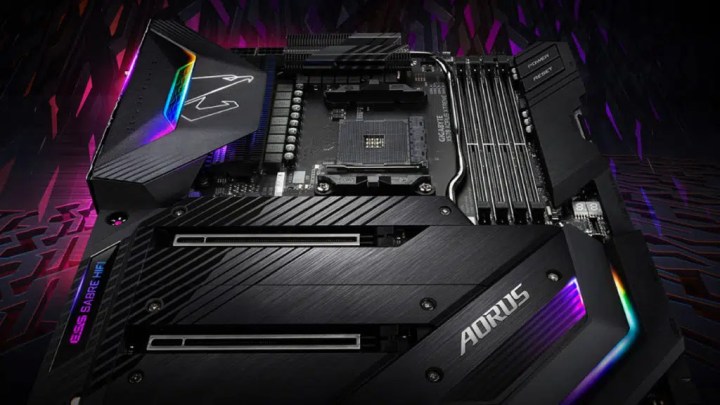
Another perk of a higher-end motherboard is an integrated input/output (I/O) shield, which fits around the ports on the rear of a motherboard. This means it’s pre-mounted or built directly onto the motherboard itself, and believe it or not, that makes installing the motherboard inside the case a lot easier. Misaligning a non-integrated I/O shield is an annoyance, as is forgetting to install it at all — been there, done that.
Lastly, aesthetics. A motherboard may not be as eye-catching as a humongous GPU, but a well-designed mobo can look great in a design-oriented PC build. Manufacturers deck out the more expensive models with some RGB lighting or designs or adopt innovative solutions for placing the components to shake things up. Then, there’s also the opposite of flashy lights — something like the Gigabyte Project Stealth motherboard and matching case that hides away most cables and keeps the bling at a minimum.
Do you need a high-end motherboard?

With all of the perks I listed, you might be tempted to splurge on a better motherboard — but do you need one?
Yes, you do, if you’re buying one of the top CPUs available. This applies regardless of whether you’re a gamer or you’re building a PC for work purposes. Don’t pair a $700 processor with a $125 motherboard — even things out and go for a higher-end model, if only to have those better VRMs, extra fan headers, and more expansion slots. They could come in handy in the future.
That doesn’t mean you need to shell out for the most expensive motherboard you can buy. A lot of motherboards that stretch above $300 show diminishing returns, and they’re built for enthusiasts and extreme overclockers. The difference between a $150 and $200 motherboard can be massive, though, so it’s worth allocating some of your budget to a nicer motherboard if you’re putting together a high-performance PC.
Budget motherboards still have their place. If you’re building a low-end PC, or you’re on a strict budget, you should still invest most of your money in a good CPU and GPU. Just know that skimping on the motherboard means that you’re giving up things like additional connectivity and limiting your potential for overclocking past a certain point.
Long story short — never let the motherboard be the weakest component in your PC, as it has a hand in everything your computer does. It’s often better to spend $50 more on a better motherboard than invest in an overclocked graphics card, for example. Keep things balanced and don’t be afraid of those Z790/X670 boards, because they really do have a lot to offer compared to their cheaper counterparts.
Editors’ Recommendations

